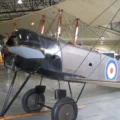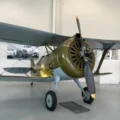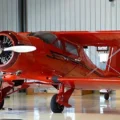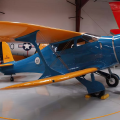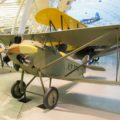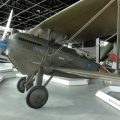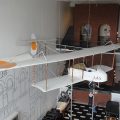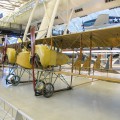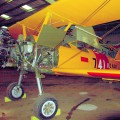
Sopwith 1½ Strutter | |
|---|---|
| Zemlja | Velike britanije |
| Ulogu | Avioni opšte namene dvotočkaša |
| Prvi let | Decembar 1915 |
| Izgradio | 4500 Francuska & 1439 Velika Britanija |
Čaj Sopwith 1+1⁄2 Strutter bio je britanski jedno- ili dvosed višenamenski dvokrilac aviona Prvog svetskog rata. To je bio prvi britanski dvosed traktor borac i prvi britanski avion koji je ušao u službu sa sinhronizovanim mitraljezom. Dobio je ime 1 + 1⁄2 Strutter zbog dugih i kratkih nosača kabine koji su podržavali gornje krilo. Tip je upravljao oba britanskog vazdušnog saobraćaja i bio je u rasprostranjenoj, ali nejasnoj službi sa francuskim Aeronautikue Militaire.
| Sopwith 1A2 Strutter Walk Around | |
|---|---|
| Fotograf | Nepoznato |
| Lokalizacija | Nepoznato |
| Fotografije | 21 |
Pogledajte i:
Čaj Sopwith 11/2 Strutter bio je svestran i inovativan dvokrilac avion koji je služio u različitim ulogama tokom Prvog svetskog rata. Dizajniran je od strane Sopvith Aviation Compani u Engleskoj, a povered bi rotacionog motora koji mu je dao maksimalnu brzinu od oko 100 mph (160 km / h). Ime 11/2 Strutter je došao od prepoznatljivog rasporeda krila podupirača, koji se sastojao od para kratkih podupirača u blizini trupa i par dužih podupirača, formirajući V oblik kada se gleda sa prednje strane.
KSNUMKS / KSNUMKS Strutter je bio prvi britanski avion koji je imao sinhronizovani mitraljez, koji je omogućio pilotu da puca kroz propeler bez oštećenja. To mu je dalo prednost u odnosu na nemačke borce koji su se oslanjali na prekidača zupčanika ili deflektorskih ploča. KSNUMKS / KSNUMKS Strutter je takođe imao rep sa promenljivom incidencijom koji se može podesiti u letu kako bi se uravnotežila različita opterećenja i vazdušne kočnice koje su smanjile udaljenost sletanja. Avion je imao dug domet i izdržljivost, što ga čini pogodnim za izviđanje, bombardovanje i pratnju misije.
11/2 Strutter je ušao u službu sa Roial Naval Air Service (RNAS) i Roial Fliing Corps (RFC) u 1916, a takođe je korišćen od strane nekoliko drugih zemalja, uključujući Francusku, Belgiju, Rusiju i Japan. To je proizveden od strane Sopvith i nekoliko drugih izvođača, sa ukupno oko 5,939 izgrađenih. KSNUMKS / KSNUMKS Strutter se pokazao kao pouzdan i efikasan u borbi, ali je postepeno zamenjen novijim i bržim avionima kako je rat napredovao. Ostao je u službi do 1919. godine, a neki su korišćeni u civilne svrhe nakon rata.
Broj posetilaca: 1075




